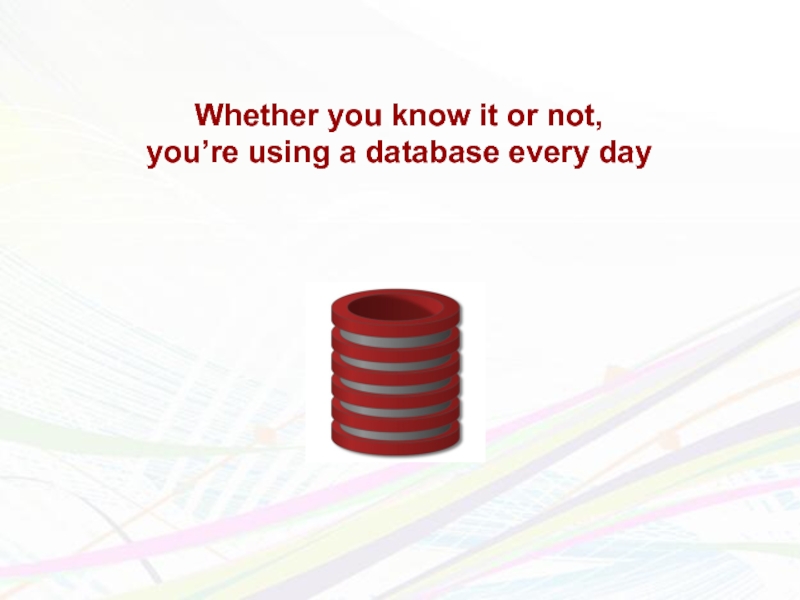- Главная
- Разное
- Дизайн
- Бизнес и предпринимательство
- Аналитика
- Образование
- Развлечения
- Красота и здоровье
- Финансы
- Государство
- Путешествия
- Спорт
- Недвижимость
- Армия
- Графика
- Культурология
- Еда и кулинария
- Лингвистика
- Английский язык
- Астрономия
- Алгебра
- Биология
- География
- Детские презентации
- Информатика
- История
- Литература
- Маркетинг
- Математика
- Медицина
- Менеджмент
- Музыка
- МХК
- Немецкий язык
- ОБЖ
- Обществознание
- Окружающий мир
- Педагогика
- Русский язык
- Технология
- Физика
- Философия
- Химия
- Шаблоны, картинки для презентаций
- Экология
- Экономика
- Юриспруденция
Intro to databases database management system презентация
Содержание
- 1. Intro to databases database management system
- 2. Intro to Databases Database Management System (DBMS)
- 3. Intro to Databases Massive Persistent
- 4. Intro to Databases Database applications may
- 5. Intro to Databases Key concepts Data
- 6. Intro to Databases Key people DBMS
- 7. The Relational Model Used by all
- 8. Schema = structural description of relations in
- 9. Schema = structural description of relations in
- 10. Schema = structural description of relations in
- 11. Schema = structural description of relations in
- 12. Schema = structural description of relations in
- 13. The Relational Model Creating relations (tables) in
- 14. The Relational Model Used by all
- 15. Querying Relational Databases Steps in creating and
- 16. Querying Relational Databases Ad-hoc queries in high-level
- 17. Querying Relational Databases Queries return relations (“compositional”, “closed”)
- 18. Querying Relational Databases Query Languages Relational
- 19. Assignment 1 Write one page essay in
- 20. Whether you know it or not, you’re using a database every day
Слайд 1Data Modelling and Databases
Jooyoung Lee
http://www.dainfos.com
Slides are adopted from Jennifer Widom @
Слайд 2Intro to Databases
Database Management System (DBMS) provides….
… efficient, reliable, convenient,
multi-user storage of and access to massive
amounts of persistent data.
Слайд 4Intro to Databases
Database applications may be programmed via “frameworks”
DBMS
Data-intensive applications may not use DBMS at all
Слайд 5Intro to Databases
Key concepts
Data model
Schema versus data
Data definition
Data manipulation or query language (DML)
Слайд 6Intro to Databases
Key people
DBMS implementer
Database designer
Database application developer
Слайд 7The Relational Model
Used by all major commercial database systems
Very
Query with high-level languages: simple yet expressive
Efficient implementations
Слайд 8Schema = structural description of relations in database
Instance = actual contents
The Relational Model
Слайд 9Schema = structural description of relations in database
Instance = actual contents
Database = set of named relations (or tables)
Each relation has a set of named attributes (or columns)
Each tuple (or row) has a value for each attribute
Each attribute has a type (or domain)
The Relational Model
Student
Dorm
Слайд 10Schema = structural description of relations in database
Instance = actual contents
Database = set of named relations (or tables)
Each relation has a set of named attributes (or columns)
Each tuple (or row) has a value for each attribute
Each attribute has a type (or domain)
The Relational Model
Schema – structural description of relations in database
Instance – actual contents at given point in time
Student
Dorm
Слайд 11Schema = structural description of relations in database
Instance = actual contents
Database = set of named relations (or tables)
Each relation has a set of named attributes (or columns)
Each tuple (or row) has a value for each attribute
Each attribute has a type (or domain)
The Relational Model
Schema – structural description of relations in database
Instance – actual contents at given point in time
NULL – special value for “unknown” or “undefined”
Student
Dorm
Слайд 12Schema = structural description of relations in database
Instance = actual contents
Database = set of named relations (or tables)
Each relation has a set of named attributes (or columns)
Each tuple (or row) has a value for each attribute
Each attribute has a type (or domain)
The Relational Model
Schema – structural description of relations in database
Instance – actual contents at given point in time
NULL – special value for “unknown” or “undefined”
Key – attribute whose value is unique in each tuple
Or set of attributes whose combined values are unique
Student
Dorm
Слайд 13The Relational Model
Creating relations (tables) in SQL
Create Table Student(ID, name,
Create Table Dorm
(name string, unit char(3), CAP integer)
Слайд 14The Relational Model
Used by all major commercial database systems
Very
Query with high-level languages: simple yet expressive
Efficient implementations
Слайд 15Querying Relational Databases
Steps in creating and using a (relational) database
2. “Bulk load” initial data
3. Repeat: execute queries and modifications
Слайд 16Querying Relational Databases
Ad-hoc queries in high-level language
All students with GPA >
All engineering departments in CA with < 500 applicants
College with highest average accept rate over last 5 years
Some easy to pose; some a bit harder
Some easy for DBMS to execute efficiently; some harder
“Query language” also used to modify data
Слайд 18Querying Relational Databases
Query Languages
Relational Algebra
SQL
IDs of students with GPA
Select Student.ID
From Student, Apply
Where Student.ID=Apply.ID
And GPA>3.7 and college=‘Stanford’
Слайд 19Assignment 1
Write one page essay in latex [sharelatex.com] that includes the
Your name and email.
Your short bio.
Categorize databases based on your opinion by using any search engine.
Cite all the sources you use.
No copy-paste.
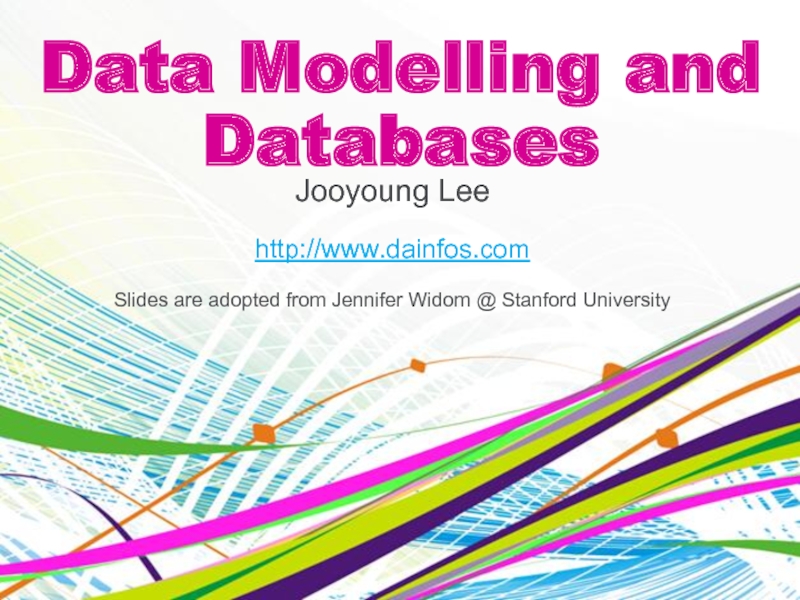
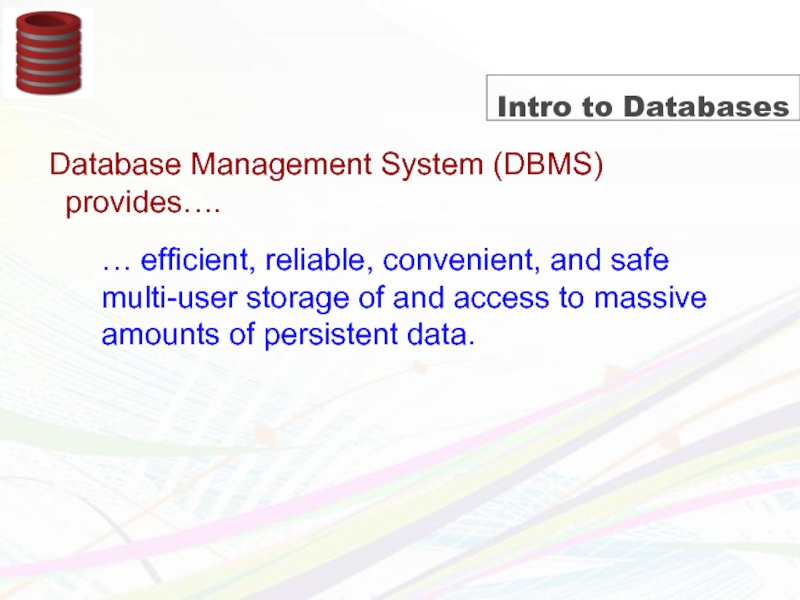
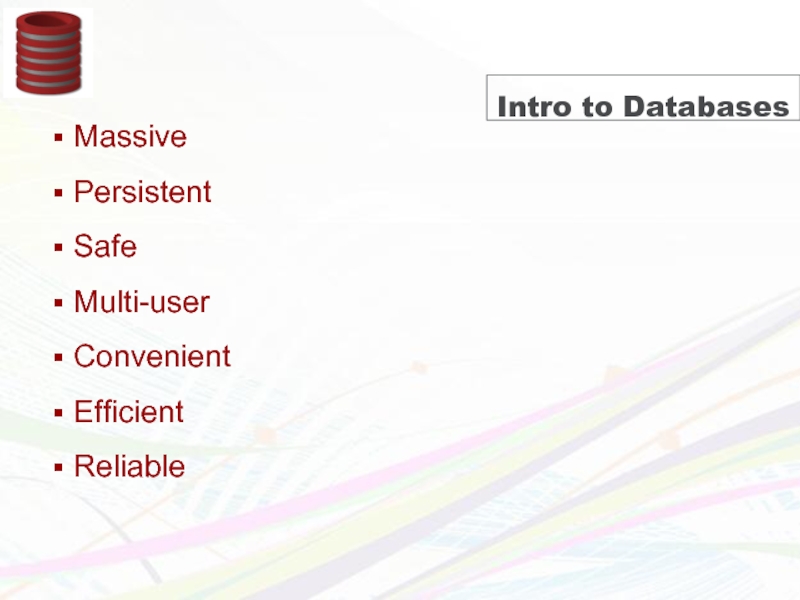
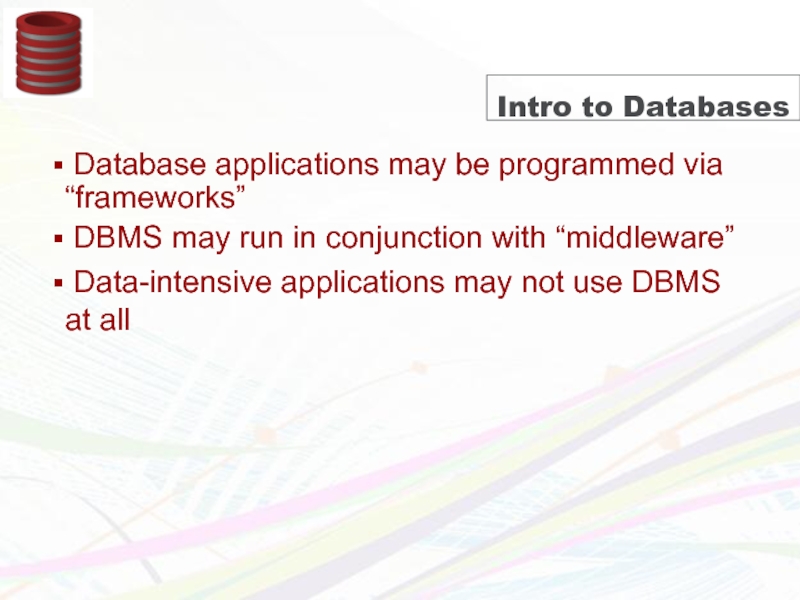
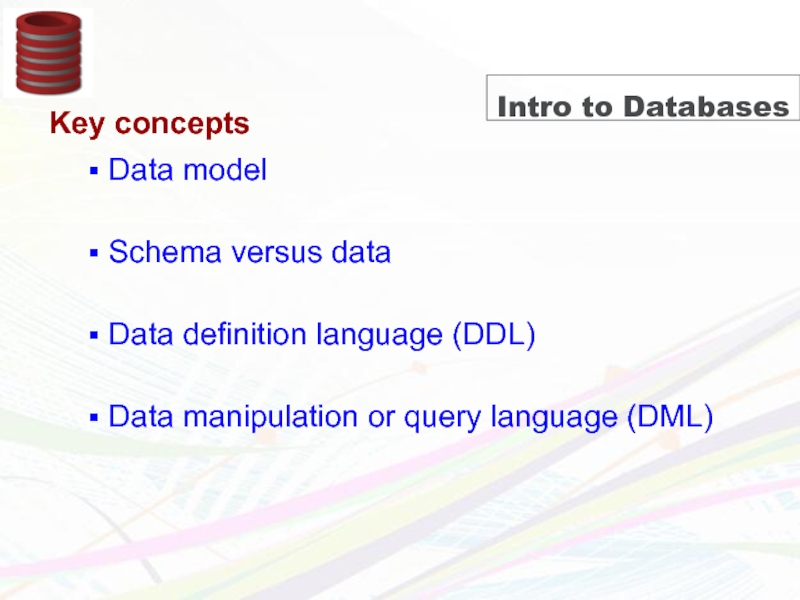
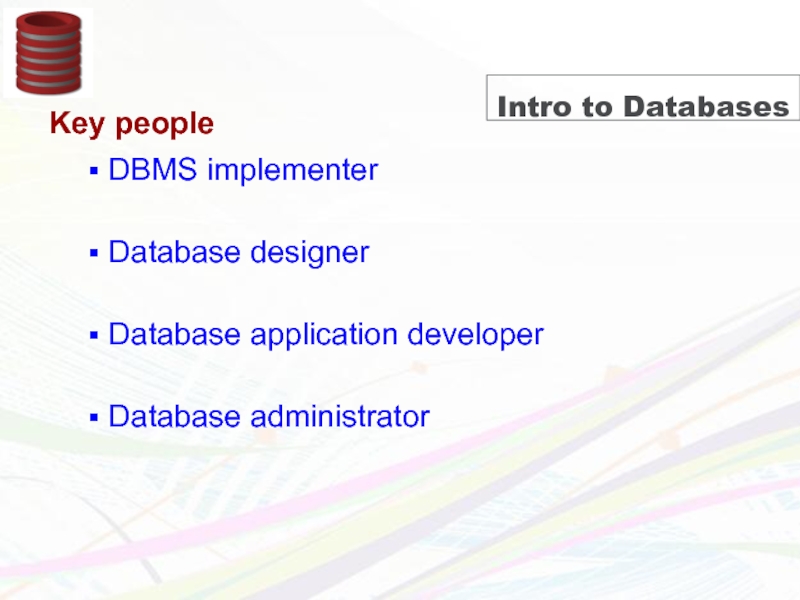
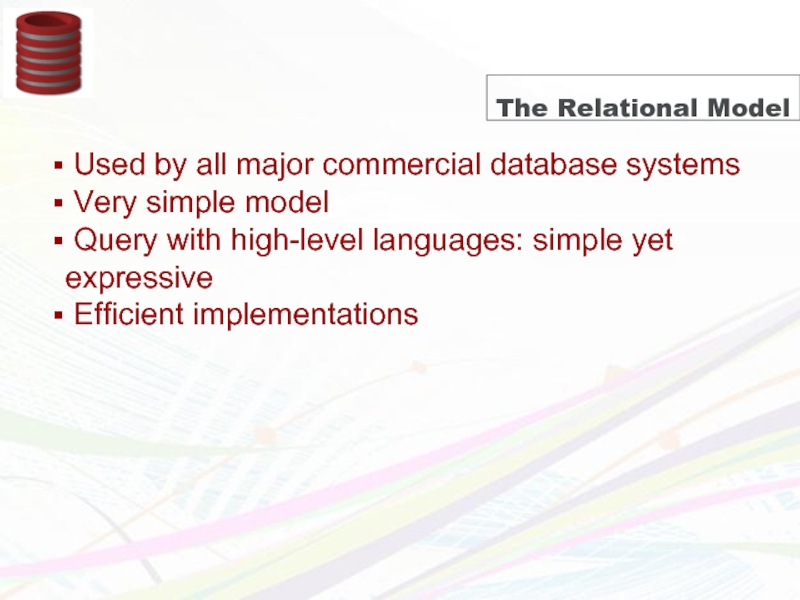
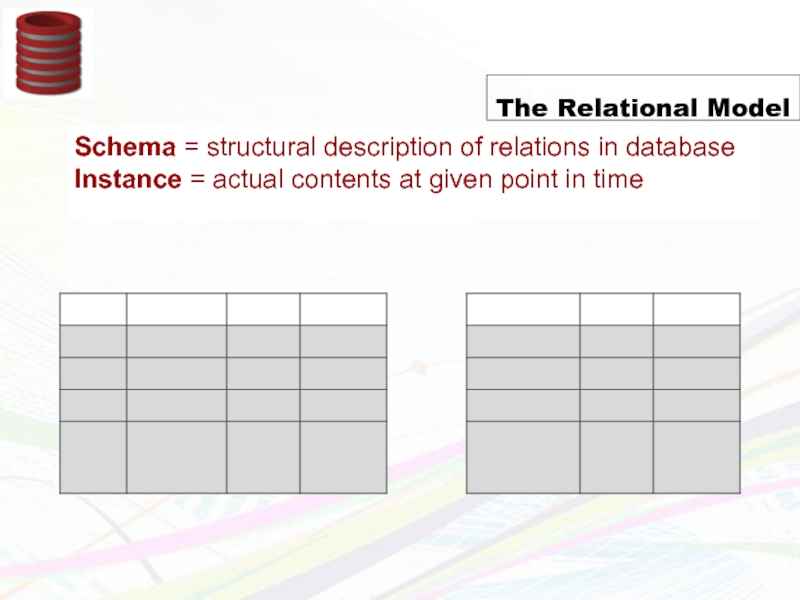
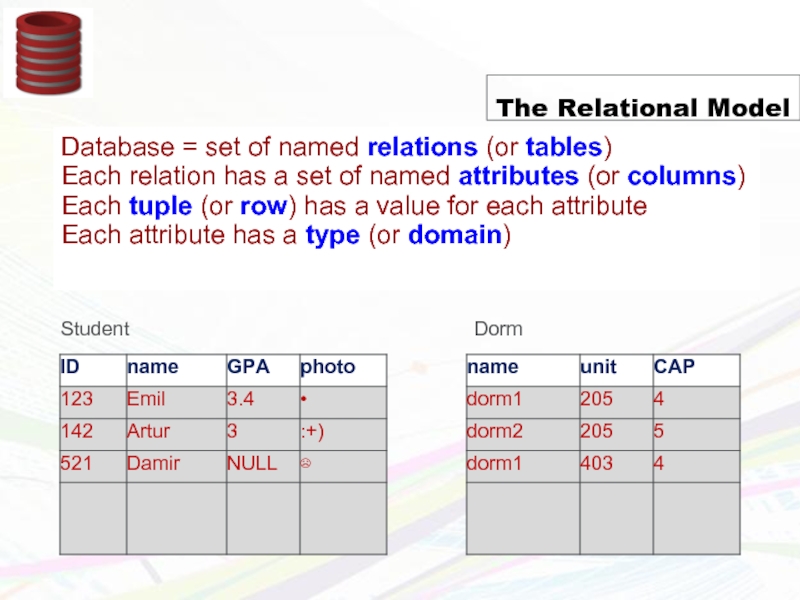
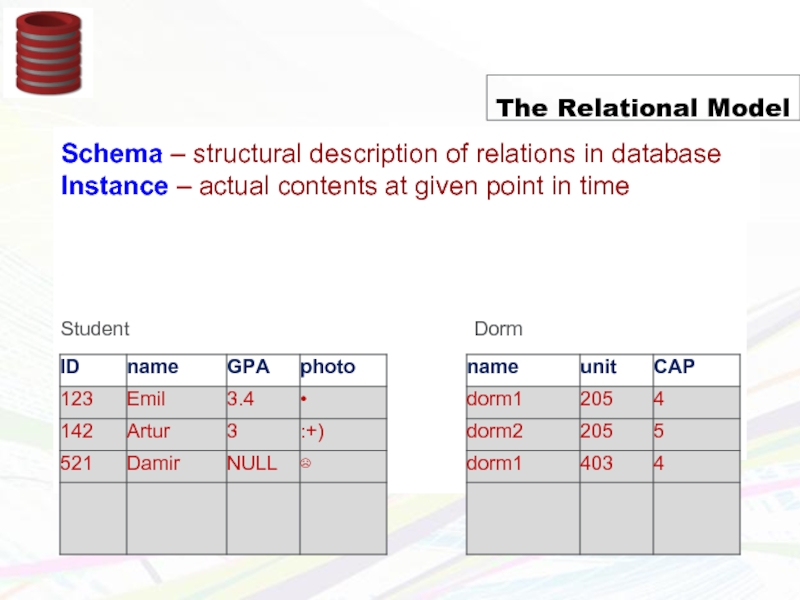
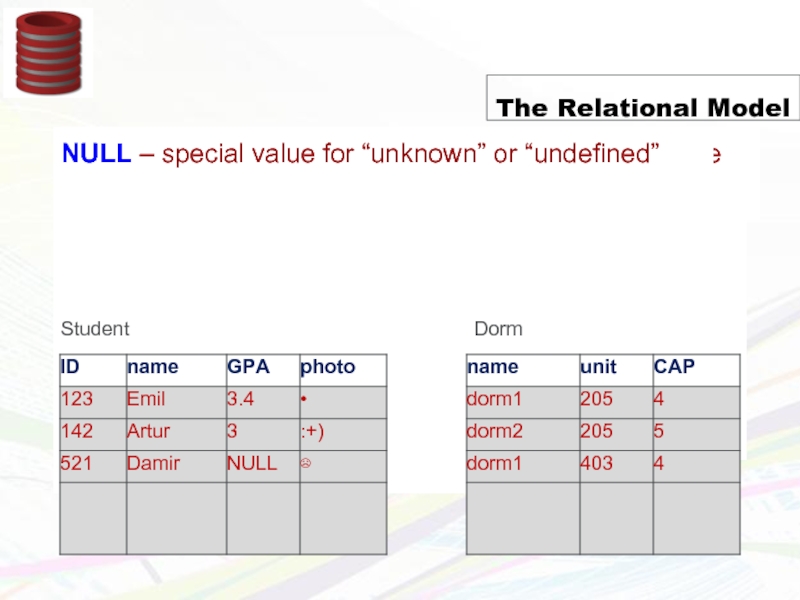
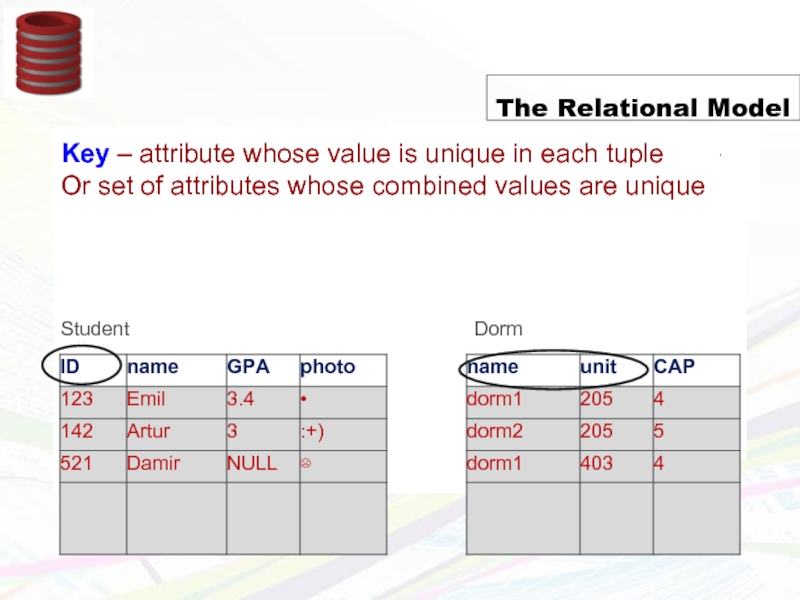
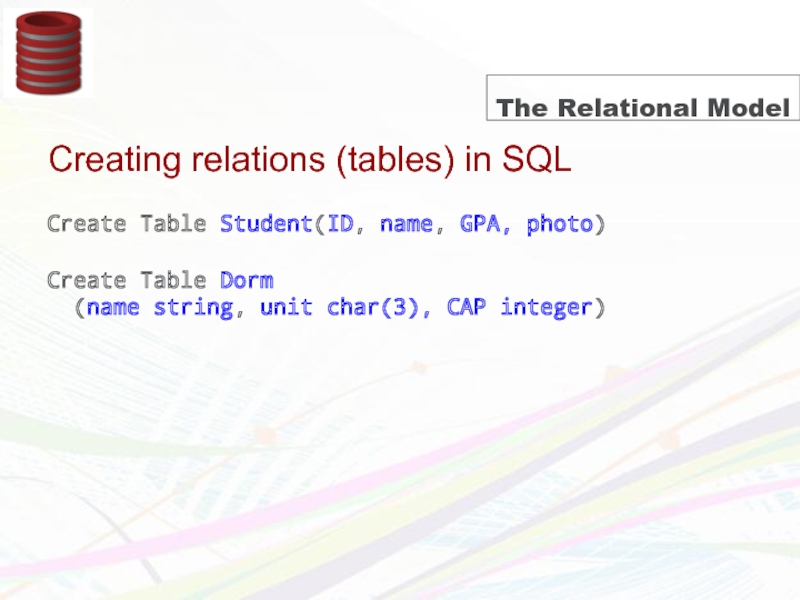
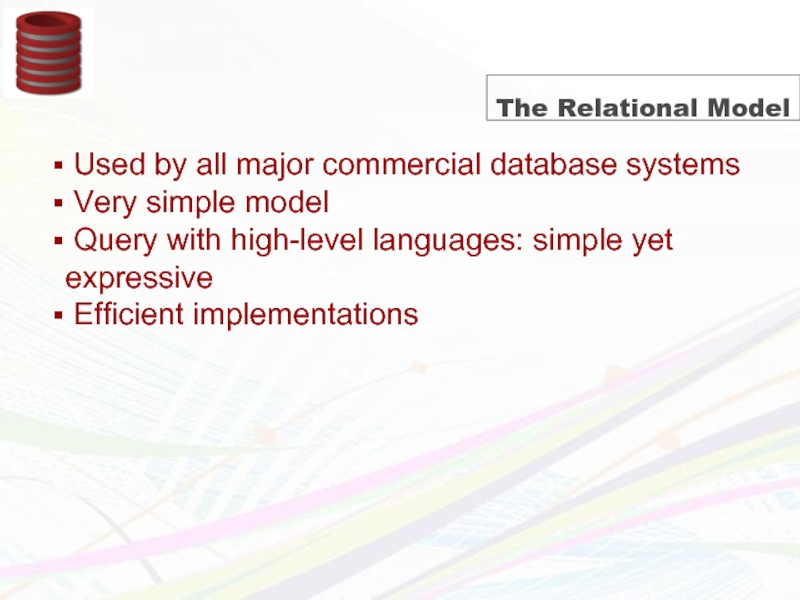
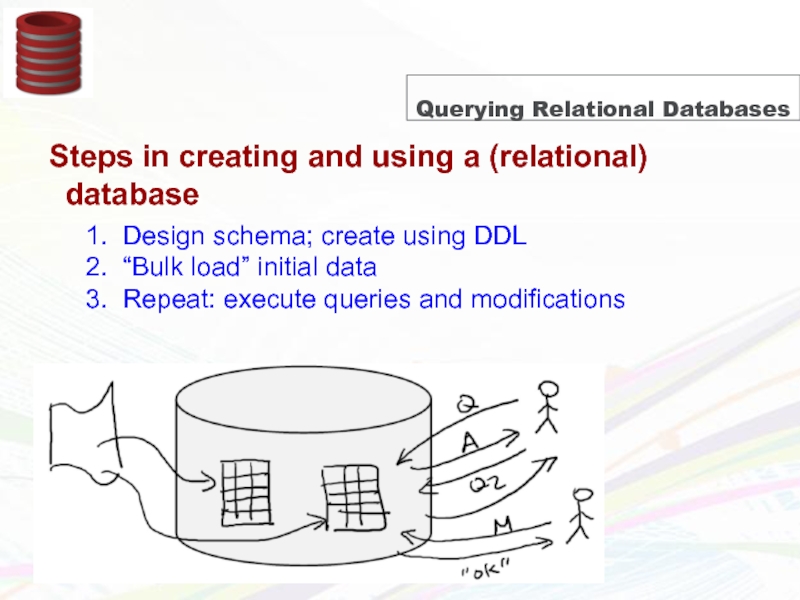
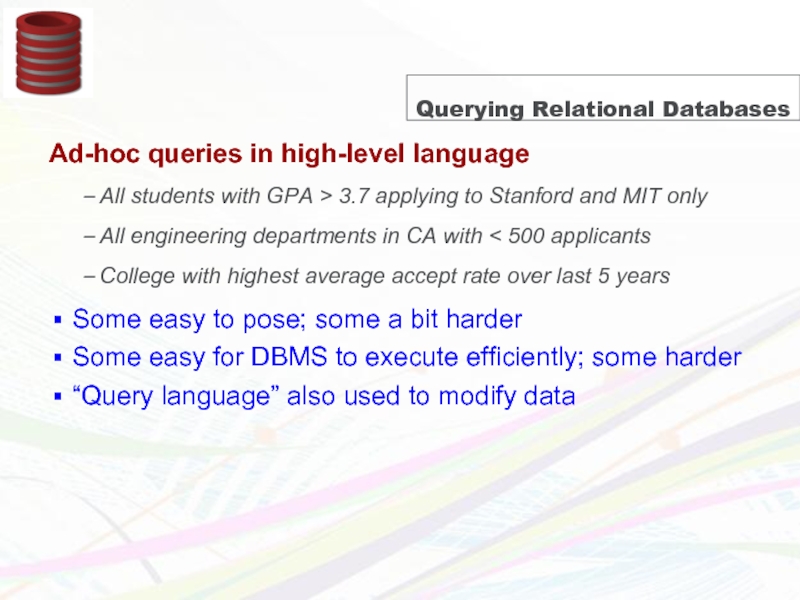
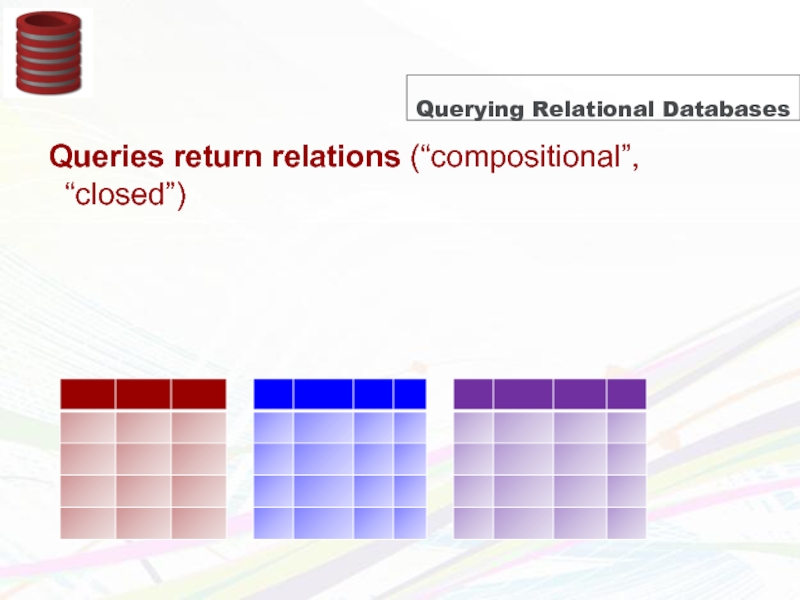
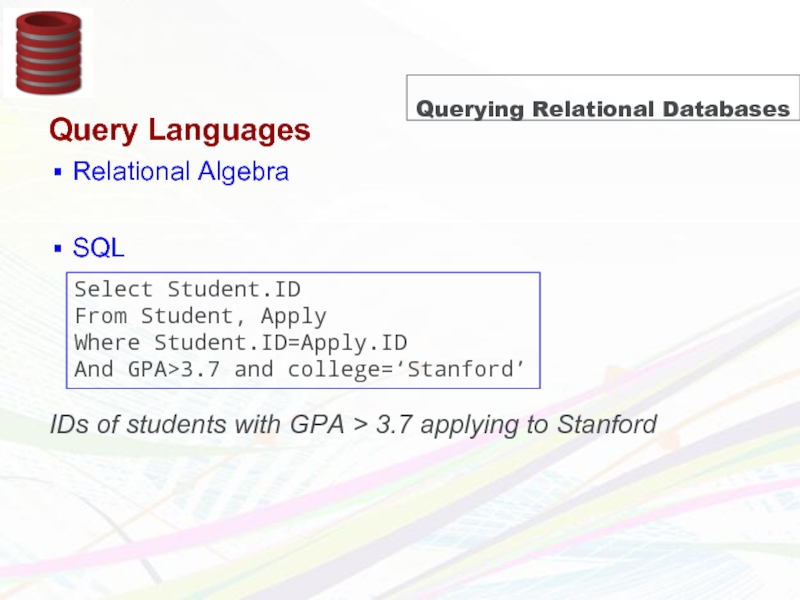
![Assignment 1Write one page essay in latex [sharelatex.com] that includes the followings:Your name and email.Your](/img/tmb/3/242979/36e47a54ad2add183422984a23bf5e83-800x.jpg)
